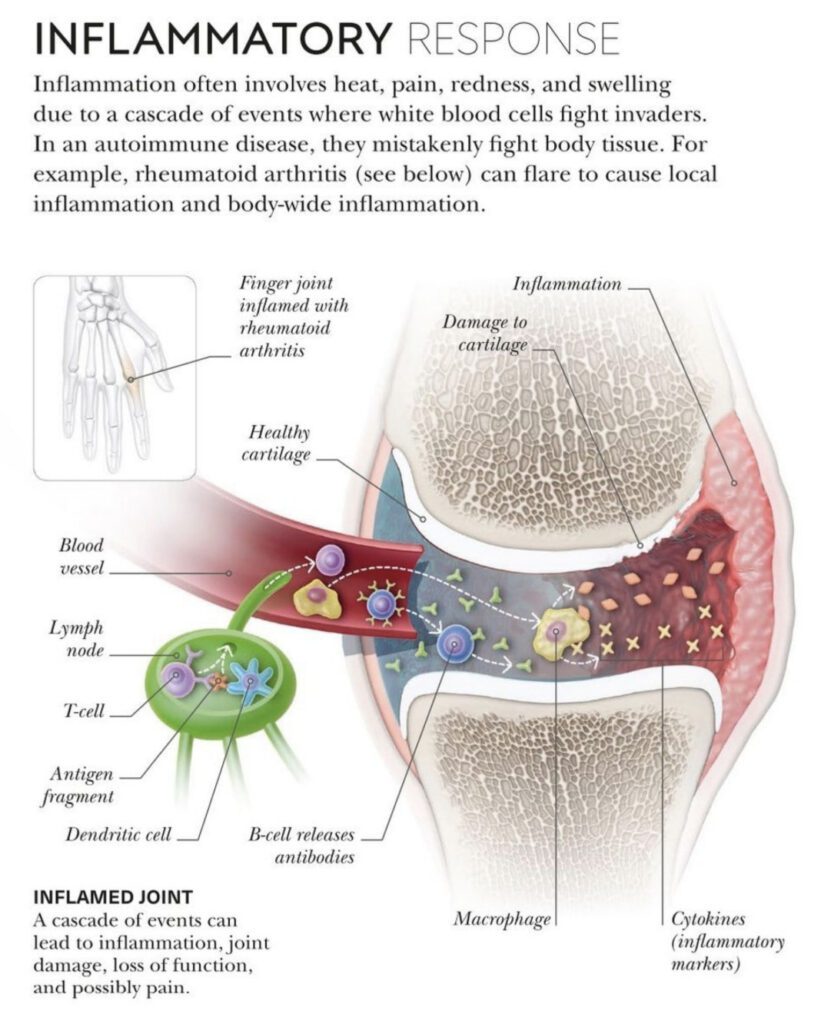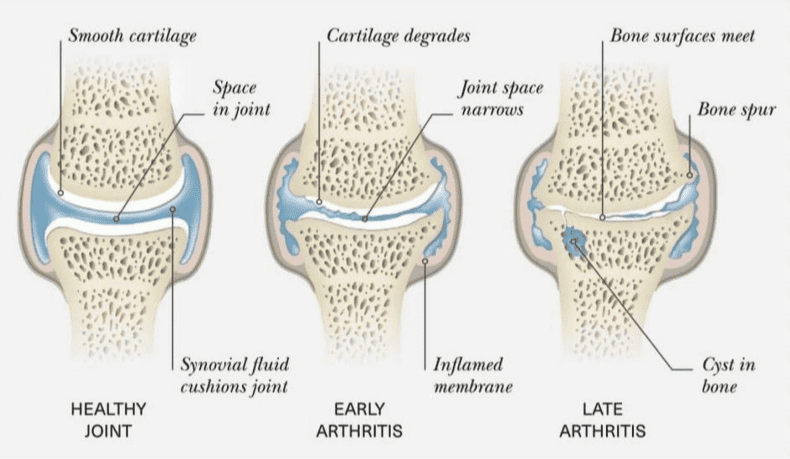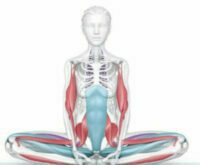The Science of Yoga (Part 3 of 3)
Practicing yoga has enormous potential for improving your overall health. Yoga can even extend your life. It affects your entire body: your hormones, musculoskeletal system, cardiovascular system, digestive system, immune system, and nervous system. And it can also improve how your brain works. Yoga is a relatively low-risk, high-yield approach to improving overall health.
If you are just getting started in yoga, click this link for some easy poses: “8 Yoga Poses for Beginners.”
Yoga for Longevity
In a study published in Oxidative Medicine and Cellular Longevity, researchers found that 12 weeks of yoga slowed cellular aging. The program consisted of 90-minutes of yoga that included physical postures, breathing, and meditation for five days a week over 12 weeks.

TelomeresTelomeres are like caps on the tips of chromosomes. Chromosomes are coiled DNA strands. Telomeres shorten as we age. Studies on the cutting edge of molecular biology show that a yogic lifestyle that includes yoga poses, meditation, social interaction (i.e., yoga classes), and a plant-based diet seems to delay the shortening and may even increase telomere length. |
Yoga Improves Strength, Balance, and Flexibility

Regularly practicing yoga improves balance and increases proprioception (the ability to feel what your body is doing and where it is in space). Better balance could mean fewer falls. For the elderly, this translates into more independence and delayed admission to a nursing home or never entering one at all.
Yoga Reduces Sensitivity to Chronic Pain
Chronic pain is a condition in which pain progresses from an acute to chronic state and persists beyond the healing process. Recent studies have revealed that persistent pain can cause permanent structural changes in the brain systems that control cognition and memory.
People who suffer from chronic pain can benefit considerably from practicing yoga. If you have chronic pain caused by arthritis or lower back pain, it’s important to be moving more rather than resting. However, consult your physician before starting an exercise routine.

Yoga helps break the neuropathic cycle of chronic pain. One study revealed that four short mindfulness meditation classes reduced pain intensity ratings by an average of 40% and reduced their pain unpleasantness ratings by 57%.
A study at the University of Utah provided insight into yoga’s effect on the body’s stress response by looking at the participants’ reactions to pain. The researchers noted that people who have a poorly regulated response to stress are also more sensitive to pain.
Yoga Reduces Inflammation

Inflammation often involves heat, pain, redness, and swelling due to a cascade of events, where white blood cells fight invaders. In an autoimmune disease, they mistakenly fight body tissue. For example, rheumatoid arthritis can flare to cause local inflammation and even body-wide inflammation.

Yoga seems to help reduce inflammation by reducing the stress response that originates from your brain. Yoga practice reduces cytokine count and, therefore, reduces inflammation. Scientists hypothesize that a long-term regular yoga practice would be most effective in reducing inflammation.
In another recent study published in Frontiers in Human Neuroscience, researchers found that a three-month yoga retreat reduced inflammation in the body. The yoga retreat incorporated physical postures, controlled breathing practices, and seated meditations. Participants did two hours of sitting meditation, one to two hours of moving practice, and one hour of chanting daily. Levels of protective anti-inflammatory markers increased after the retreat, while harmful pro-inflammatory markers decreased. Researchers also found that brain-derived neurotrophic factor (BDNF) levels tripled. Participants felt less depressed, less anxious, and had fewer physical symptoms.

Wear and tear on joints can lead to osteoarthritis. In a 7-year clinical trial, researchers found that yoga is safe and effective in managing both osteoarthritis and rheumatoid arthritis. After an 8-week yoga class, participants showed a reduction in pain by 25%, along with statistically significant improvements in physical fitness and quality of life.
Restorative yoga poses are best for people with arthritis. Initially developed for those recovering from illness or dealing with pain, restorative yoga is known for its relaxing and healing effects (“Inflammation: A unifying theory of disease?“).
Restorative yoga allows students to practice using as little physical effort as possible. Postures are held longer while engaging in deep breathing to relax as far as possible into the pose. The mind focuses on the breath to cultivate mindfulness and release tension from the body. It’s still and slow, and it is more about the mind than it is the body.
Everyday Health.com has a great post about restorative yoga poses for arthritis.

There have been many scientific peer-reviewed studies that prove yoga is effective in relieving back pain. However, the correct form is essential. If you have back pain it is recommended that you do yoga with a trained instructor. Yoga is not for people who have a spinal fracture or a herniated (slipped) disc. When you practice restorative yoga, you can safely improve your mobility and strength while stretching tight and aching back muscles.
One of the best ways to relieve lower back pain is the spinal twist yoga pose. You can do this in a chair if you have mobility issues.
There have been many scientific peer-reviewed studies that prove yoga is effective in relieving back pain. However, the correct form is essential. If you have back pain it is
recommended that you do yoga with a trained instructor. Yoga is not for people who have a spinal fracture or a herniated (slipped) disc. When you practice restorative yoga, you can safely improve your mobility and strength while stretching tight and aching back muscles.
One of the best ways to relieve lower back pain is the spinal twist yoga pose. You can do this in a chair if you have mobility issues.
Yoga and Cardiovascular Disease
Heart disease causes one in every four deaths. Pharmaceutical treatments are usually not enough to control heart disease. Yoga is a proven technique to help lower blood pressure, cholesterol, blood glucose, and heart rate. According to one study at Johns Hopkins, patients with heart failure who went through an eight-week yoga program showed improvement in exercise capacity and quality of life.

Another study from the Journal of the American College of Cardiology found that yoga could improve the symptoms of atrial fibrillation (aka Afib). Atrial fibrillation is an irregular heartbeat that increases the risk of stroke and heart disease.
Yoga Improves the Immune System
Researchers at the University of South Carolina had their study participants do yogic breathing for 20 minutes. After these breathing exercises, the specific molecules associated with healthy immune function actually increased.
Yoga Boosts Your Mood and Manages Stress
According to The International Journal of Yoga, practicing yoga in group settings reduces mental stress, improves mood and quality of life.
A study from the International Journal of Yoga Therapy showed an improved sense of energy to live life fully and with genuine enjoyment. According to a meta-study published by Harvard University, when yoga poses are combined with controlled breathing, patients exhibited an impressive reduction in stress, anxiety, and depression.
10 Yoga Poses for Stress Relief

Yoga Improves Sleep
A study conducted by the Journal of Ayurvedic Integrative Medicine monitored people who practiced yoga regularly. They found that they had better overall sleep quality, and fewer disturbed sleep episodes, and they took less time to fall asleep. Study participants had less daytime dysfunction, used fewer sleep medications, and felt more rested and energetic in the morning.
Everydayhealth.com has a great post about yoga poses for better sleep.
Endocrine Glands and Hormones
Your brain controls the release of hormones from endocrine glands to maintain a balance inside your body, called homeostasis. Stressors caused by external environmental conditions and emotional factors affect this balance. Researchers from the Boston University School of Medicine presented evidence that yoga helps regulate homeostasis by stimulating and increasing stress-blocking neurotransmitters. Homeostasis is a healthy state that is maintained by the constant adjustment of biochemical and physiological pathways.

Yoga and Stress Hormones
When you practice yoga poses, your brain waves work in tandem with the endocrine system to release beneficial hormones into your bloodstream, which in turn delivers them to your cells. This process releases chemicals that not only help you relax but also lower your stress and anxiety levels. These hormones are gamma-aminobutyric acid (gaba), dopamine, serotonin, and oxytocin.
How Yoga Affects Your Hormones
Practicing yoga helps your body manufacture your happy hormones. These are the very same hormones that pharmaceutical companies synthesize in a lab and sell to you as antidepressants, anti-anxiety, and attention-deficit medications, among others. Scientific researchers are uncovering the huge potential of yoga.
The Stress Hormone - Cortisol
Cortisol is a stress hormone that is reduced during yoga. When cortisol levels remain high for too long, it can lead to inflammation and a slower metabolism, thus leading to weight gain. High levels of cortisol can also compromise the immune system and eventually lead to permanent brain changes. It can also cause major depression, osteoporosis, high blood pressure, and insulin resistance.
Yoga and Metabolism
A reduction in stress hormones prevents your body from holding onto fat. Having your hormones in balance (homeostasis) boosts your metabolism, which in turn burns more calories, thus causing loss of fat and increased muscle.
- Serotonin is mainly produced by the gut and is also increased during yoga. Serotonin helps regulate your mood. Low levels of serotonin are associated with depression.
- Oxytocin is a hormone and a neurotransmitter that can increase during yoga therapy, according to this 2013 study of the effects of yoga on oxytocin production. Also known as the love hormone, it is associated with childbirth, breastfeeding, empathy, trust, sexual activity, and relationship-building.
How Yoga Affects Neurotransmitters
Neurotransmitters are the body’s chemical messengers. They are the molecules carried by the nervous system to transmit messages between neurons or from neurons to muscles.
- Gaba is a naturally occurring amino acid that works as a neurotransmitter in your brain. Increased during yoga, Gamo-Amino Acid (gaba) counteracts anxiety and stress symptoms, leading to more relaxation.
- Dopamine is regulated during yoga. Dopamine, also made in the gut, provides the focus and drive you need to complete your tasks in the most efficient way. This hormone is primarily involved with attention span, focus, and motivation. A lack of dopamine can lead to addiction and attention deficit.
- Norepinephrine is reduced during yoga. Norepinephrine, also known as adrenaline, is responsible for the body’s “fight or flight” response. Yoga decreases this stress hormone.
Conclusion
It’s probably a good idea to pay attention to your body. Ignoring pain or depending on pharmaceuticals to heal your body is not always the best practice. Yoga is the very essence of paying attention to your body.
Finding 20-minutes to practice yoga only a few times per week may be enough to make a noticeable difference when it comes to your health.
For more information, see The Science of Yoga (Part 1 of 3) and How Yoga Can Enhance Your Brain (Part 2 of 3).

